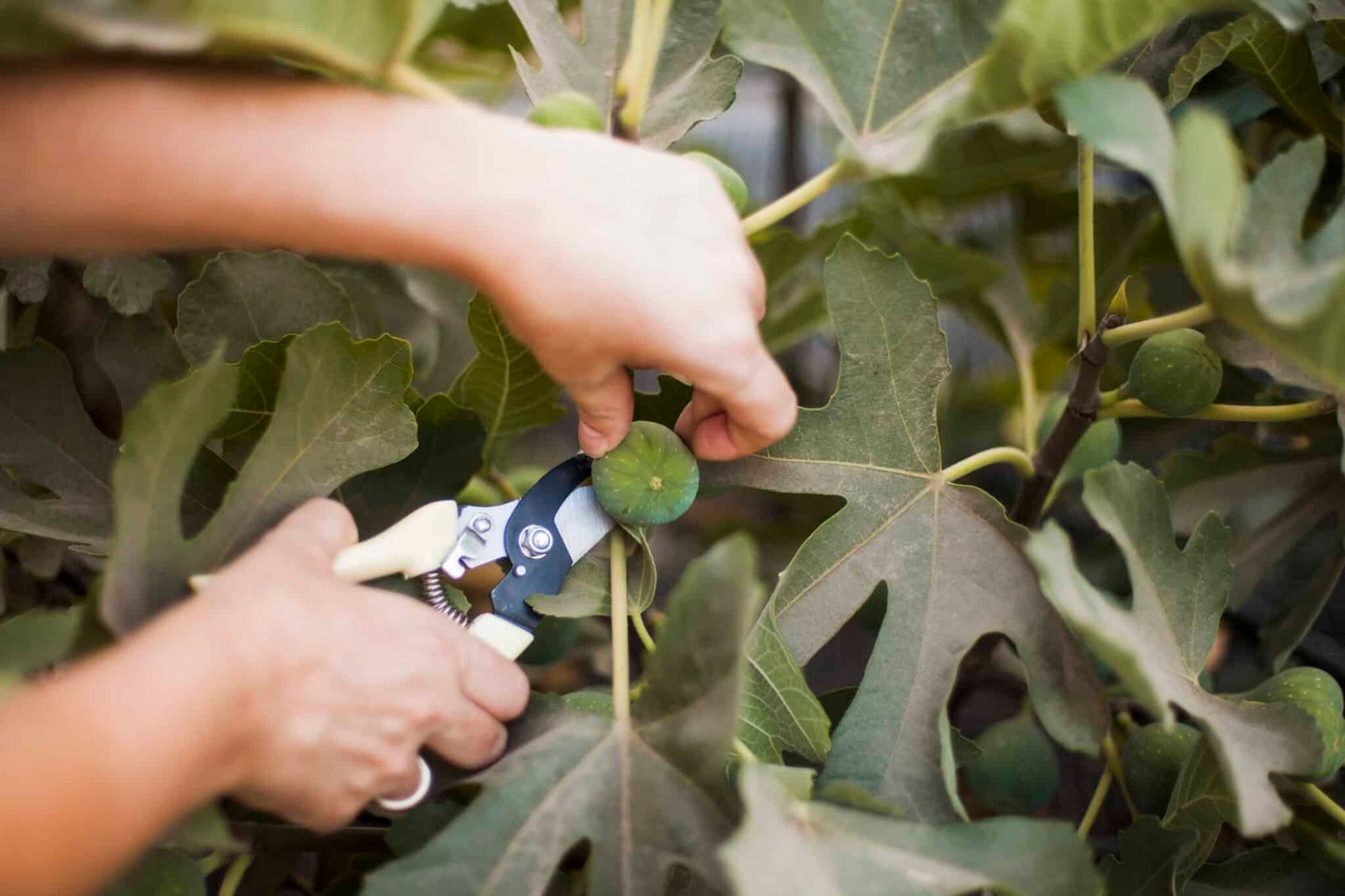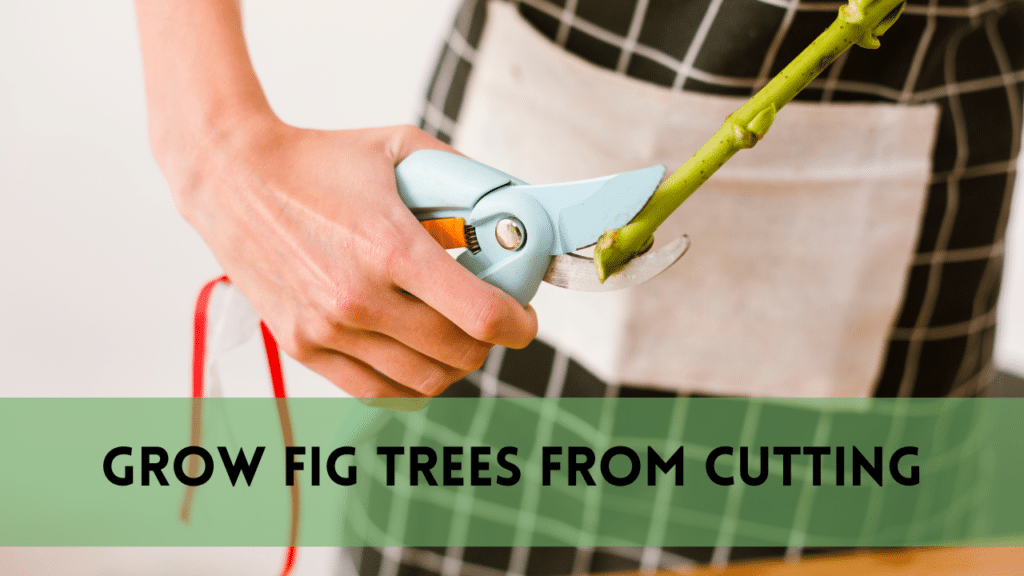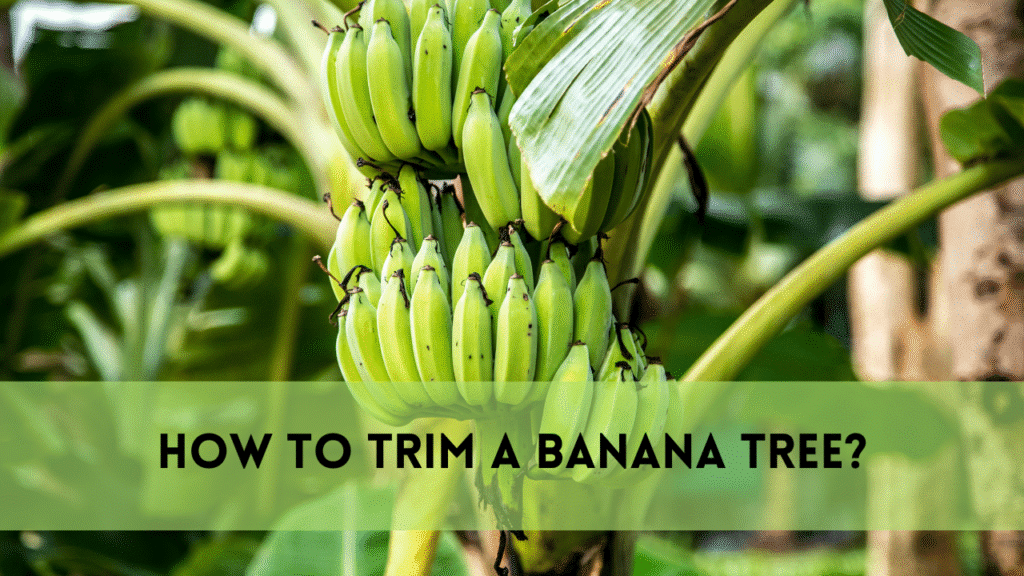Expanding your garden on a budget is possibe. You can also gain satisfaction from growing fig trees from cuttings. This step-by-step tutorial is on how to grow fig trees from cuttings.
- Knowing About How to Grow Fig Trees from Cuttings
- Choosing the Appropriate Part of Fig Trees
- Getting Ready for The Cuttings to Grow Fig Trees
- Application of Rooting Hormone
- Selecting the Proper Soil for Your Fig Tree Cuttings
- Planting the Clippings
- Creating the Ideal Setting for Fig Trees After Cutting
- Watering and Observation
- The Key Is Patience to Grow Fig Trees from Cuttings
- Moving Your Fig Tree Around
- Maintaining Aged Fig Trees
- Pruning to Boost Productivity and Shape
- How to Fertilise Fig Trees
- Defending Fig Trees Against Insects and Illnesses
- Harvesting Delicious Figs
-
FAQs
- Is it possible to propagate fig cuttings from any season?
- How much time does a fig tree need cuttings to develop roots?
- Does propagating fig trees from cuttings need rooting hormone?
- Can I just put cuttings from my fig tree in my garden?
- What is the optimal time of year to gather figs from my well-established trees?
- Conclusion
Knowing About How to Grow Fig Trees from Cuttings
Let’s take a moment to learn about How to grow fig trees from cuttings. Before diving into the intriguing area of propagation. Figs are members of the Ficus genus and are prized for their mouthwatering fruits. They are also known for their unusually lobed leaves. Fig trees are a great addition to any garden since they can grow well in a variety of climates with the correct care.
Choosing the Appropriate Part of Fig Trees
Making the correct material selection is an essential initial step. Its deciding for developing fig trees from cuttings. Seek for robust branches with a length of around 8 to 10 inches. These cuttings should ideally have at least two leaf nodes. They should also originate from the growth of the current season.
Getting Ready for The Cuttings to Grow Fig Trees
It’s time to get your cuttings ready for propagation after you’ve collected them. Just under a leaf node, make a clean cut with a pair of sharp, clean pruning shears. Take out any extra leaves so that there are only a few at the top. This makes it possible for the cutting to concentrate on root growth.
Application of Rooting Hormone
To boost the chances of successful root development, consider applying rooting hormone. Apply it to the cut ends of your fig tree cuttings. This substance stimulates root growth and increases the likelihood of a successful propagation. Dip the cut end into the rooting hormone, ensuring it is well-coated.
Selecting the Proper Soil for Your Fig Tree Cuttings
Selecting the ideal soil for your fig tree cuttings is the next step. Ideal is a combination that drains well yet holds some moisture. Sand, perlite, and potting soil can be combined to make a mix. This mixture should be poured into tiny pots or containers. Leave approximately an inch at the top.
Planting the Clippings
It’s time to plant the cuttings you prepared. Using a pencil or your finger, make a tiny hole in the ground. Plant the cutting, making sure it is placed at least two inches deep. For stability, gently push soil around the incision.
Creating the Ideal Setting for Fig Trees After Cutting
Fig trees do well in warm, sunny climates. Your potted cuttings should be placed in an area with lots of sunshine. Like a window that faces south or a location in your garden that receives direct sunlight. For best root development, keep the temperature at 70°F (21°C) on a regular basis.
Watering and Observation
For optimal fig tree proliferation, the soil must be kept constantly wet. Although it is important not to overwater. When the top inch of soil seems dry, water the cuttings. Keep an eye on the moisture levels and modify your watering plan as necessary.
The Key Is Patience to Grow Fig Trees from Cuttings
It takes time to grow fig trees from cuttings. The cuttings might not form a strong root system for a few weeks. Refrain from checking for roots too frequently or disturbing the soil too soon. Instead, exercise patience. You may think about moving the cutting into a bigger container once you see fresh growth. Alternatively you can plant it directly into the garden.
Moving Your Fig Tree Around
It’s time to move your fig tree cuttings into their permanent location. After they have robust roots and are exhibiting signs of aggressive development. Select a sunny spot in your yard that drains properly. After making a hole big enough to fit the root system, carefully take the cutting out of its pot and put it in the hole. Add dirt to the hole and water thoroughly.
Maintaining Aged Fig Trees
You’ve grown fig trees from cuttings, congratulations! Let’s now discuss how to take care of your established plants. Although figs require very little care. Few essential procedures will guarantee their production and health in the long run.
Pruning to Boost Productivity and Shape
An important part of caring for fig trees is pruning. It facilitates fruit production, air circulation, and the preservation of the proper form. Before new growth starts, prune your fig tree in late winter or early spring. The tree should be shaped by pruning back overgrown branches. Remove any dead or unhealthy limbs as well.
How to Fertilise Fig Trees
Fertilization should be done on a regular basis to help fig trees thrive and produce fruit. Make use of a fertilizer that is balanced. Having the same amounts of potassium, phosphorus, and nitrogen. When the new growth begins in the spring, apply the fertilizer. Take care not to fertilize too much as this might cause too much foliage to grow at the price of producing fruit.
Defending Fig Trees Against Insects and Illnesses
Watch out for any indications of pests or illnesses on your fig trees. Aphids, scale insects, and fungal infections are common problems. Examine the leaves and branches on a regular basis, and take quick action to fix any issues you see. Insecticidal soap and neem oil applications aid in pest management. Appropriate spacing and pruning encourage airflow and lower the chance of fungal infections.

Harvesting Delicious Figs
One of the most rewarding aspects of growing fig trees is enjoying the delicious fruits they produce. Figs are typically ready for harvest in late summer or early fall, depending on the variety. Harvest the fruits when they are fully ripe, as they do not ripen well once picked. Figs should be soft to the touch and have a rich color.
FAQs
Is it possible to propagate fig cuttings from any season?
Cuttings from the current season’s growth are preferred. They should be at least two leaf nodes and normally measure 8 to 10 inches in length.
How much time does a fig tree need cuttings to develop roots?
A few weeks may pass while roots form. Take your time and try not to disrupt the soil too much. When fresh growth starts to show, the cutting is starting to take root.
Does propagating fig trees from cuttings need rooting hormone?
Using rooting hormone improves the likelihood of effective root formation. However it’s not required. It’s a useful step to accelerate the process of propagation.
Can I just put cuttings from my fig tree in my garden?
You may transplant your cuttings straight into a sunny, well-draining area of your garden. Once they have robust roots and are growing rapidly.
What is the optimal time of year to gather figs from my well-established trees?
Figs are typically ready for harvest in late summer or early fall, depending on the variety. Harvest when the fruits are soft to the touch and have a rich color.
Conclusion
Cultivating fig trees from cuttings is a rewarding and doable project for any gardener. If you take the necessary care and follow these instructions, you should reap the rewards in a plentiful supply of luscious, sweet figs. This comprehensive guide will help you successfully cultivate these lovely fruit-bearing plants. By covering every step of the procedure, from choosing the proper cuttings to caring for your mature trees. Cheers to your successful gardening!



